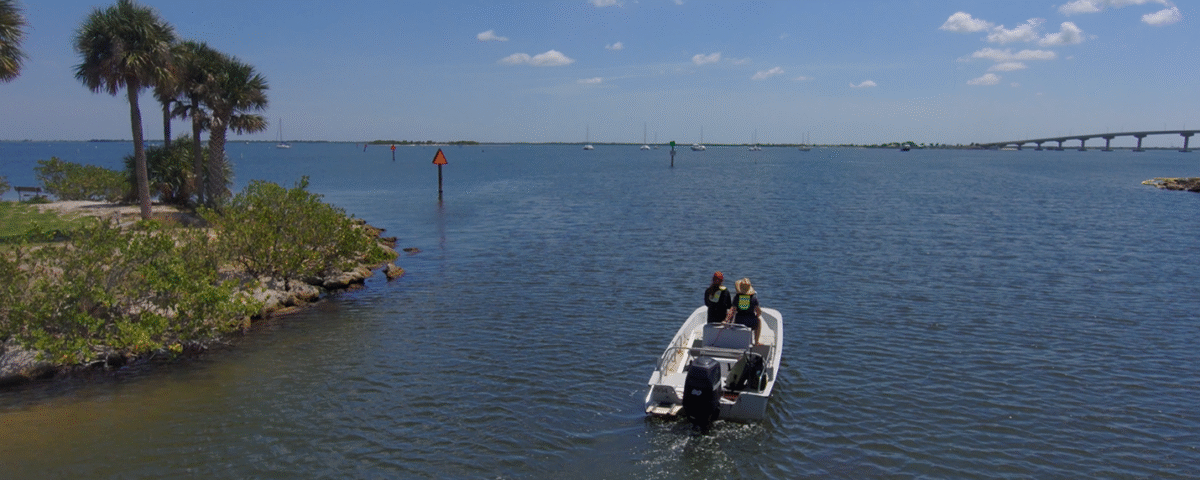District advances C-10 project design to protect Indian River Lagoon

A boater enjoys a calm day on the Indian River Lagoon — a reminder of the vital connection between recreational access and the ongoing efforts to protect the lagoon’s health.

A boater enjoys a calm day on the Indian River Lagoon — a reminder of the vital connection between recreational access and the ongoing efforts to protect the lagoon’s health.
The District is moving forward with another major step in restoring and protecting the Indian River Lagoon (IRL) with the planned C-10 Water Management Area (WMA) project in southern Brevard County. The District’s Governing Board approved an agenda item at its June 10 meeting authorizing staff to begin negotiations with an engineering firm to complete the design.
The C-10 WMA project is a proposed 1,300-acre surface water management system located at the west end of Malabar Road. Once complete, it will improve water quality in the IRL, enhance regional flood protection and help restore natural hydrology to the historic Upper St. Johns River Basin.
“This project represents the next chapter in our continued mission to protect Florida’s water resources,” said the District’s Strategic Planning Basin Coordinator Melisa Diolosa. “By improving water quality and restoring natural flows, we’re ensuring residents and visitors alike can continue to enjoy the Indian River Lagoon.”
The project is designed to reduce the amount of excess nutrients entering the IRL, restore historic surface water flows west to the St. Johns River, enhance regional flood protection and improve long-term ecology and community resiliency.
Stormwater from the C-1 Canal, which currently flows into the IRL, would instead be redirected to the C-10 WMA. There it will be naturally filtered and treated before flowing into the Three Forks Marsh and ultimately the Upper St. Johns River.
This approach mirrors the District’s Crane Creek/M-1 canal project, which is nearing completion. That effort redirects flows from the M-1 Canal, significantly reducing nutrient impacts to the lagoon.
“With the successful completion of the Crane Creek project, we’re proud to carry that momentum forward as we prepare to break ground on the C-10 project — the next major step in restoring the Indian River Lagoon,” said Diolosa “C-10 builds on our commitment to nature-based solutions that protect and restore the Upper St. Johns River and the Indian River Lagoon, two of Florida’s most iconic and ecologically vital waterways.
Once operational, the C-10 WMA is expected to prevent approximately 29,300 pounds of total nitrogen and 1,300 pounds of total phosphorus from reaching the IRL each year. That’s the equivalent of keeping about five fully loaded dump trucks of nitrogen and one dump truck of phosphorus out of the water annually. Excess nitrogen and phosphorus can fuel harmful algal blooms that degrade water quality, harm aquatic life and reduce the recreational and economic value of the lagoon. In addition to nutrient reduction, the project will return up to 8 million gallons of water per day to the Upper St. Johns River Basin, restoring natural flow patterns. These benefits build on the success of the C-1/ Sawgrass Lake project, which has operated since 2015 and removes an estimated 148,000 pounds of nitrogen and 13,000 pounds of phosphorus from stormwater annually.
The District’s work is made possible through strong partnerships with the Florida Department of Environmental Protection (DEP), the Brevard County Save Our Indian River Lagoon (SOIRL) Program, and local stakeholders such as the cities of Palm Bay and Melbourne, and the Melbourne Tillman Water Control District.
These restoration efforts reflect the District’s mission to protect water quality, ensure sustainable water supplies and safeguard Florida’s natural systems—including the iconic IRL.
For more information about the District’s restoration efforts and upcoming projects, visit www.sjrwmd.com.

